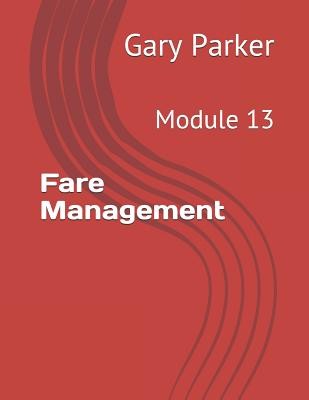
- We will send in 10–14 business days.
- Author: Gary Parker
- Publisher: INDEPENDENTLY PUBLISHED
- ISBN-10: 1794438238
- ISBN-13: 9781794438231
- Format: 21.6 x 27.9 x 0.2 cm, minkšti viršeliai
- Language: English
- SAVE -10% with code: EXTRA
Reviews
Description
The primary fare management objective of airlines that has perpetuated since deregulation is to match a competitor's fare. This is based on the premise that in a capital-and asset-intensive industry, the marginal cost of adding passenger is very low and hence the focus is to protect and retain market share and pay down fixed costs. Consequently, an airline's fare actions are mostly reactive. Fare changes could be classified into two groups, regional or system-wide fare changes and market-specific changes. The former consists mainly of sales and general increases on all fares. Sales are always matched except when an existing sale provides a better incentive to the public than the new one.Market-specific fare changes are typically triggered by a single carrier based on the carrier's perceived dominance in a market or based on schedule-related service changes in the market. When a fare action is triggered by an airline, other carriers typically respond with an identical response to protect market share regardless of the revenue impacts. Sometimes, the reaction ripples through other markets or differs from the original change, inducing a series of cascading changes. This behaviour of reactive fare response is consistent with the desire of most airline executives to retain and protect market share. Research dating back to the nineteenth century confirms that price matching in the competitive marketplace can be an optimal strategy.In this module, we begin by looking at latency in the price planning and execution process. We describe fare dimensions, fare types, and the classification of fare products along with usage rules and purchase restrictions. The second part introduces the fare management process. The next section is on how fare management impacts revenue management.
- Author: Gary Parker
- Publisher: INDEPENDENTLY PUBLISHED
- ISBN-10: 1794438238
- ISBN-13: 9781794438231
- Format: 21.6 x 27.9 x 0.2 cm, minkšti viršeliai
- Language: English English
The primary fare management objective of airlines that has perpetuated since deregulation is to match a competitor's fare. This is based on the premise that in a capital-and asset-intensive industry, the marginal cost of adding passenger is very low and hence the focus is to protect and retain market share and pay down fixed costs. Consequently, an airline's fare actions are mostly reactive. Fare changes could be classified into two groups, regional or system-wide fare changes and market-specific changes. The former consists mainly of sales and general increases on all fares. Sales are always matched except when an existing sale provides a better incentive to the public than the new one.Market-specific fare changes are typically triggered by a single carrier based on the carrier's perceived dominance in a market or based on schedule-related service changes in the market. When a fare action is triggered by an airline, other carriers typically respond with an identical response to protect market share regardless of the revenue impacts. Sometimes, the reaction ripples through other markets or differs from the original change, inducing a series of cascading changes. This behaviour of reactive fare response is consistent with the desire of most airline executives to retain and protect market share. Research dating back to the nineteenth century confirms that price matching in the competitive marketplace can be an optimal strategy.In this module, we begin by looking at latency in the price planning and execution process. We describe fare dimensions, fare types, and the classification of fare products along with usage rules and purchase restrictions. The second part introduces the fare management process. The next section is on how fare management impacts revenue management.


Reviews